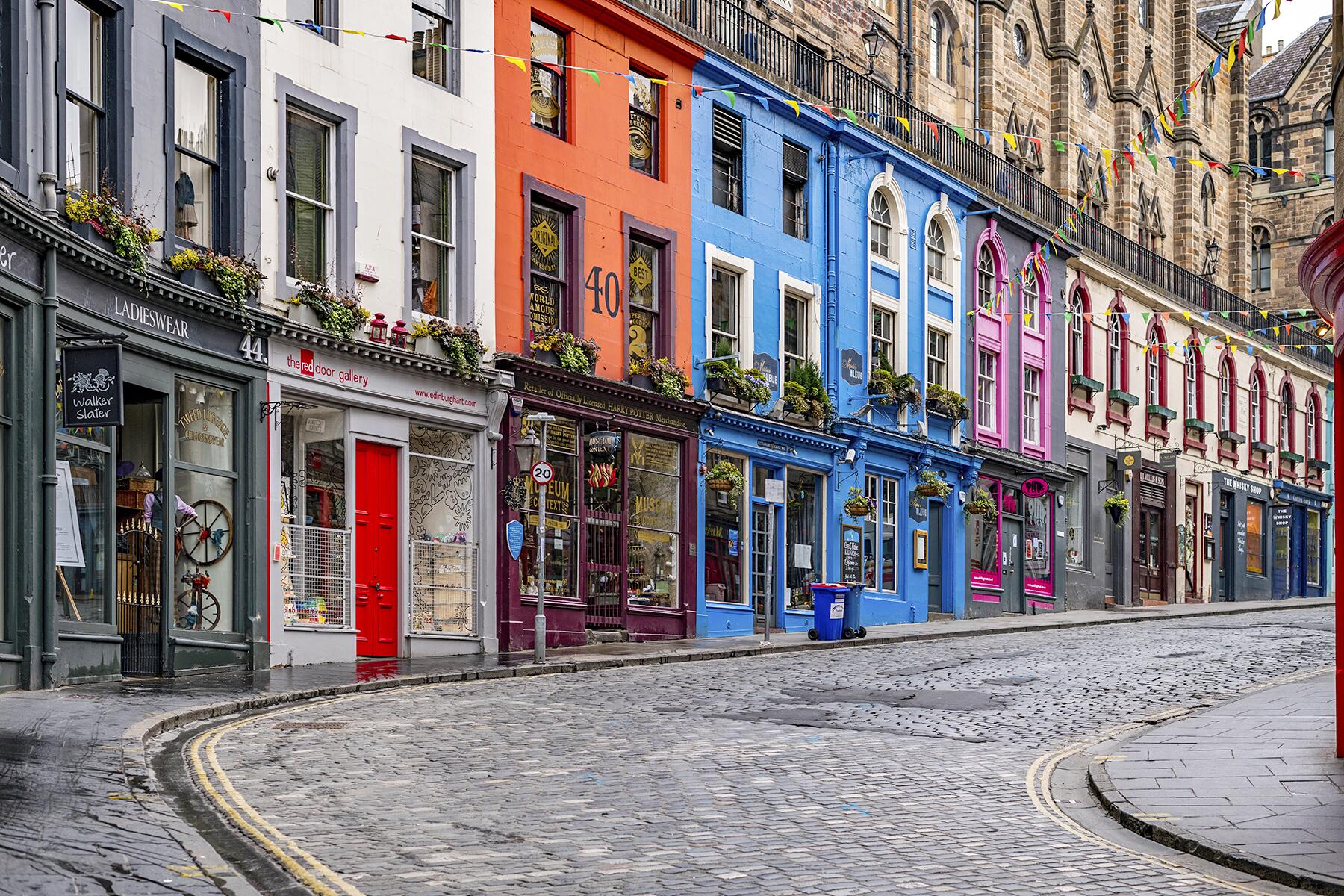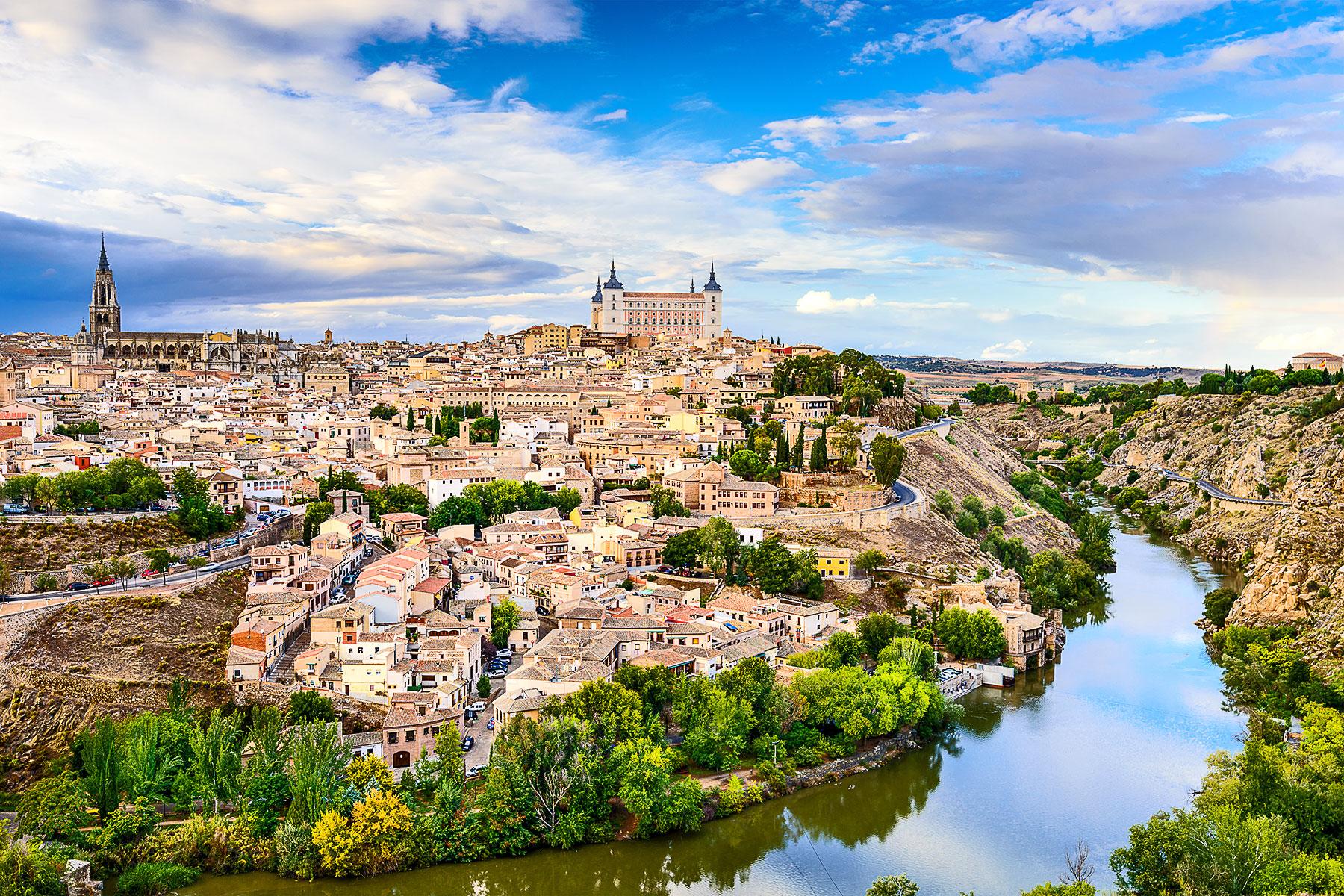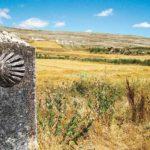Planning a trip? These are the non-negotiables.
It’s official: Spain has overtaken the United States as the world’s second most popular vacation destination, trumped only by France. And what’s not to like? Up north, the craggy coastline is peppered with charming fishing villages tucked between lush mountain valleys. Inland, gnarled olive groves and rolling vineyards alternate with whitewashed villages, while due south, Spain’s Moorish past comes to life in enchanting palaces and perfumy flower gardens. Then there’s stately Madrid, with its wide boulevards and myriad museums, and Barcelona, a Gaudí fever dream on the Mediterranean Sea—not to mention Spain’s Caribbean-esque Canaries and paradisiacal Balearic Islands. With so much to see, planning a trip can be daunting, which is why we’ve rounded up the non-negotiables—activities that best speak to Spain’s vibrant cultures and locales.
Tour the Moorish Halls of La Alhambra
People often forget that the Moors ran the show on the Iberian Peninsula for some 700 years, an Islamic heritage that lives on in Spain’s architecture, cuisine, and culture. Yet nothing epitomizes the Moors’ power and ingenuity like La Alhambra, a sprawling centuries-old palace and fortress complex bursting with Mudejar architecture. Set aside a few hours here to take in the neverending horseshoe-arched courtyards, burbling fountains, and impossibly intricate Arabesques.
INSIDER TIPTickets to the Alhambra are in such high demand (the site receives approximately two million visitors a year) that it’s advisable to book online as far in advance as possible.
Discover Toledo, Capital of Ancient Spain
Before King Philip II moved the courts to Madrid in 1561, the city of Toledo, in the region of Castilla-La Mancha, was the Spanish capital. Prior to the Spanish Inquisition, Toledo was a melting pot, a place where Muslims, Jews, and Christians cohabitated in relative harmony—hence the city’s nickname, “City of Three Cultures.” The Synagogue of El Tránsito, built in the 14th century, is Spain’s most treasured testament to its Jewish past with elaborate carvings and paneled ceilings, while the Primada de Santa María Cathedral stands as a reminder of the omnipotent Church, which would expel the Jews and Muslims from the city in the late 15th century (or force them to convert to Christianity).
INSIDER TIPSince there’s so much history to digest in Toledo, optimize your time by hiring one of the city’s official local guides (inquire at the tourist office), whose ear-to-the-ground knowledge and private access to rare cultural sites justify the investment.
Recommended Fodor’s Video
Get Inside Gaudí's Brilliant Brain at La Sagrada Familia
La Sagrada Familia, slated for completion in 2026 after 150 years of construction, is on track to become the tallest religious building in Europe. But beyond its sheer bulk, the structure’s magnificence lies in its architectural marvels created by Catalan architect Antoni Gaudí. Weaving together Gothic and Art Nouveau styles in novel ways, the basilica is a soaring fantasy world of vivid stained glass, animal carvings, and zoomorphic motifs—designs that echo Gaudí’s belief that nature and the divine were inextricably linked.
INSIDER TIPLines at the ticket booth are notoriously long, so you’re better off buying passes ahead of time online.
Get Your Modern Art Fix at the Guggenheim Museum Bilbao
Chances are, you’ve seen photos of the Guggenheim Bilbao, Frank Gehry’s architectural triumph of undulating titanium and chaotic, nature-inspired forms built on Bilbao’s riverfront. But nothing can prepare you for its sheer scale, which can only be appreciated in person. Once inside, thought-provoking works by artists like Richard Serra, Mark Rothko, and Andy Warhol will keep you entranced as you walk from room to room.
INSIDER TIPStick around for lunch at Nerua, the Michelin-starred restaurant known for its avant-garde menu that winks to traditional Basque cuisine.
Spend a Day in Madrid's Golden Triangle of Art Museums
Every European city aspires to have a world-class museum brimming with instantly recognizable masterworks. Madrid? It has three—within blocks of one another. The first stop on any Madrid art tour should be the Museo del Prado, whose collection of works (spanning from the 12th to 18th centuries) by Titian, Velázquez, and Goya are second to none. After gazing slackjaw at such famed paintings as Velázquez’s Las Meninas, wander over to the Museo Thyssen-Bornemisza, which presides over one of Europe’s greatest and widest-ranging private art collections with masterpieces by Van Gogh, Dalí, Caravaggio, and Rembrandt, among others. Then, for a taste of the Spanish here-and-now, visit the Museo Nacional de Reina Sofía, the country’s leading modern art museum. Its crown jewel? Picasso’s deeply disturbing Guernica.
INSIDER TIPThe best way to experience the Reina Sofía is to start on the rooftop terrace and wind down from the temporary exhibitions to the permanent collection.
Time-Travel to Ancient Rome in Mérida
Mérida, a rather unremarkable city in the dusty province of Extremadura, was once the booming capital of Lusitania, the Roman province that covered approximately one-quarter of the Iberian Peninsula. Remnants of the great city—then called Emerita Augusta—include a stone amphitheater (one of the best-preserved in Europe), an arched bridge, and complex water-supply systems, all of which can be appreciated on a tour of the grounds. The ensemble is the largest of its kind in Spain and protected by UNESCO.
INSIDER TIPTraveling from Madrid to Lisbon? Mérida lies halfway between the two cities. There’s no better place to stretch your legs than in an ancient Roman town.
Snap Photos of Cuenca's Hanging Houses
It doesn’t get much more picturesque than Cuenca’s hanging houses, a collection of buildings perched on a cliffside overlooking the Huécar River dating back to the 15th century. They seem to defy gravity—or “hang”—with their vertical layouts and wooden balconies that jut over the ravine.
INSIDER TIPThe “Casa del Rey,” one of the oldest hanging houses in town, is now the Museo de Arte Abstracto Español, well worth visiting for its works by such world-renowned abstract artists as Eduardo Chillida, César Manrique, and Antonio Saura.
Day-Trip to El Escorial, a Castle on a Hill
At 28 miles from Madrid, San Lorenzo del Escorial makes for a leisurely day trip away from the hustle and bustle of the Spanish capital. The medieval town’s main attraction is a gargantuan royal residence, a veritable labyrinth of gilded halls, hand-painted chambers, and manicured French gardens. It’s worth paying the €10 entry fee to see the library alone, whose vibrant frescoes and leather-bound tomes spur the imagination.
INSIDER TIPEschew the touristy restaurants on Plaza Virgen de Gracia and instead settle in for a homey feast at Cava Alta, an old-timey tavern specializing in roast lamb, a local specialty.
Pass Under Hundreds of Moorish Arches in Córdoba's Ancient Mosque
Erected in the 10th century as a symbol of the Islamic grandeur of Al-Andalus, the Mezquita de Córdoba, also known as the Mosque-Cathedral of Córdoba, enchants its visitors with 856 columns, floridly engraved mihrab, and candy cane-striped double arches. An impressive yet incongruous cathedral nave sits smack in the middle of the mosque; its 16th-century construction—which necessitated the demolition of dozens of arches—was criticized by the very king who mandated its construction. “You have destroyed something unique to build something commonplace,” he’s reported to have said.
INSIDER TIPRound out your visit to the mosque with a stroll across the scenic Roman Bridge of Córdoba, located steps from the exit, which people have been traversing for at least two millennia.
Dine Alfresco on a Picturesque Plaza
A city’s plaza, or main square, should be the first stop on any itinerary: There’s no better way to get the feel of a new place than by people-watching in its plaza. These squares can be grand and a little overwhelming (we’re looking at you, Plaza Mayor in Madrid), and they can also be irresistibly quaint. For exquisite Baroque architecture and regal charm, spend some time in Salamanca’s Plaza Mayor. If a family-friendly, locals-only feel is more up your alley, snag an outdoor table in Madrid’s Plaza de Olavide. And let’s not forget the picturesque plazas of La Mancha, Don Quixote country: In the village of Almagro, pop into any restaurant on the main square to savor tapas of pickled eggplant, the town’s claim to fame; in Tembleque, snap a pic of the multi-level wooden balconies in a 17th-century plaza that’s hardly changed a lick since it was built.
INSIDER TIPPlazas across Spain are major tourist attractions, which means restaurants and cafés situated on them are often overpriced and underwhelming.
Shout "¡Olé!" at a Live Flamenco Show
You’ve never seen a concert like this—an aerobic, foot-stomping whirlwind of click-clacking castanets, impossibly precise guitar solos, and gut-wrenching vocals. Such is the magic of the tablaos, flamenco venues where onlookers gasp in awe at the performers and shout “¡Olé!” at the end of each set. In Sevilla, venues Los Gallos and El Arenal host consistently outstanding—if slightly pricey—nightly shows.
INSIDER TIPIt’s a myth that you can only find good flamenco in southern Spain, the dance’s birthplace. Case in point: the non-touristy, well-priced show at El Juglar in Madrid.
Hole up in an Ancient Fort, Convent, or Castle
Like every major tourist destination, Spain has been invaded by bland, one-size-fits-all hotel chains. For properties with personality and a sense of place, look to Paradores, a state-run network of accommodations housed in converted forts, convents, castles, and other historic buildings. Of particular note are the Paradores at Congas de Onís, a terrific home base for hikers exploring the Picos de Europa, and at Cáceres, a Renaissance palace located in the heart of the town’s UNESCO-protected historic center.
INSIDER TIPThe Parador at Santiago de Compostela serves an exceptional version of the city’s eponymous tarta de Santiago, or almond cake.
Make a Pilgrimage to Santiago de Compostela
Sure, you can drive or fly into Santiago de Compostela, but then you’d be missing out on the legendary Walk of St. James, a thousand-year-old Christian pilgrimage—or scenic, secular hike, for most peregrinos these days—that ends in the Galician capital. After exploring the sky-high Romanesque-Gothic cathedral, where St. James’s remains are said to be interred, stroll through the one-car-wide streets of the Old Town, popping into the city’s many independently owned cafés and boutiques along the way.
INSIDER TIPYou can’t leave Galicia without a few forkfuls of pulpo a la gallega, medallions of tender octopus sprinkled with smoky Spanish paprika and crunchy salt. The no-frills Bodegón Os Concheiros serves the city’s best rendition.
Embark on a Tapas Crawl
By now, you know about tapas, that glorious Spanish tradition of door-to-door snacking and boozing until the wee hours of the morning. In cities famous for their tapeo, like Granada and León, every drink you order comes with a bountiful free tapa—maybe some fried chorizo tossed with potatoes, a plateful of mussels en escabeche, or a few rough slices of peppery sausage. Up north in the Basque Country, tapas are called pintxos, well-priced bites with (often) innovative preparations and techniques. Wherever you end up in Spain, remember that the best way to sample a wide range of local dishes (and alcoholic beverages) is a whirlwind tapas tour.
INSIDER TIPIn Madrid and Barcelona, drinks don’t always come with a free tapa, but it can never hurt to ask, ¿Nos pones una tapa, por favor?, since Spanish waiters and bartenders are notoriously forgetful.
Visit an Architect's Paradise at Fundació Joan Miró
Perched on Montjuïc, the hard-to-pronounce hill that rises behind Barcelona’s city center, Fundació Joan Miró was founded in 1975 by the Catalan artist himself with the aim to make his art more accessible to the public. Today more than 10,000 masterpieces of contemporary art, including Miró’s early Surrealist paintings and Dada-inspired later works, are on display, and many are searchable via QRpedia, a mobile platform that allows museum-goers to pull up Wikipedia pages of notable works by scanning QR codes.
INSIDER TIPWhether you visit for a half an hour or an entire afternoon, don’t miss the rather hilarious painting Man and Woman in Front of a Pile of Excrement.
Stroll Through Europe's Best-Preserved Gothic Quarter
A treasure trove of Gothic architecture, the Barri Gòtic is Barcelona’s most ancient quarter, a maze of cobblestone streets and stone arcades that empty into medieval plaças. A visit to the Barcelona City History Museum, on the Plaça del Rei, provides excellent context for understanding the neighborhood and the city at large. But in spite of all the antiquity, Barri Gòtic boasts some of the city’s chicest boutiques. Hand-sewn, rope-soled espadrilles, or alpargatas as they’re known in Spain, make cheery, affordable souvenirs; find them at La Manual Alpagatera, worth a visit if only to marvel at the floor-to-ceiling stacks of sandals available in every hue and style.
INSIDER TIPWake up early on a Sunday morning to explore the Mercat Gòtic, where you can hunt for antiques and, if luck strikes, witness a traditional Catalan dance on the plaça called the “Sardana.”
Spark Your Imagination in Gaudí's Park Güell
Park Güell is Antonio Gaudí’s pièce de résistance in urban planning. Using the Collserola foothills as his canvas, Gaudí designed an architectural park whose structures (houses, fountains, pillars, walkways) often appear to be extensions of nature. Columns shoot up like tree trunks, jagged-like cave openings form arches, and giant lizards with scales fashioned from mosaic tiles guard fountains. As you leave the monumental area and follow the steep, uphill path, let the sweeping views awaiting you at the top be your motivation.
INSIDER TIPAs with many Barcelona attractions, it’s wise to buy tickets ahead, since the park lets in just 400 visitors every 30 minutes.
Catch Some Rays on Fine-Sand Beaches
The best thing about peninsulas is that beaches are in no short supply, and on the Iberian Peninsula, where you can choose between the scrubby, sun-drenched beaches of the Mediterranean and the wilder, brisker shores of the Atlantic, you truly can’t go wrong. Families and partiers shouldn’t miss the Playa de Bolonia in Cádiz, Andalusia, with its hikeable sand dune, beachside seafood shacks, and nearby Roman ruins (at Baelo Claudia). Travelers seeking solace—and adventure—should set out for Playa del Güigüí on Gran Canaria, a paradise of crystalline waters and views of El Teide volcano, accessible via a three-hour hike (depart from Tasarico village), or for the white-sand Playa de Melide, situated on the remote island of Ons (population: 81), off the Galician coast.
INSIDER TIPIn the Balearic Islands, seek out calas, secluded beaches tucked into rocky coves. Cala Pilar, on Menorca, is one of the archipelago’s most scenic, thanks to its backdrop of red-clay hills.
Take a Promenade Through Retiro Park's Gardens
El Parque del Buen Retiro boasts tree-shaded trails, bustling outdoor cafés, and intricate French gardens—right in the city center. Though the park teems with runners and sporty types, you don’t have to work up a sweat to enjoy its key landmarks such as the Palacio de Cristal, an impressive greenhouse that’s one of the country’s best examples of iron-and-glass architecture. After perusing whatever contemporary art exhibition happens to be on display inside (the Palacio doubles as a contemporary art space), make your way to the estanque, the central lake and promenade, where you can rent a rowboat and admire the massive Monument of Alfonso XII, a colonnade surrounding an equestrian statue of the triumphant king. Then, exit onto the Plaza de la Independencia to see the Puerta de Alcalá, a neoclassical monument that once served as a guarded entryway into the medieval city.
INSIDER TIPThe Retiro’s Fuente del Ángel Caído, or Fountain of the Fallen Angel, by master architect Ricardo Bellver, is one of Europe’s most thought-provoking sculptural depictions of the devil.
Dine Standing up at a Gastronomic Market
Over the last decade or so, a curious new way to dine has emerged in Spain with the advent of epicurean markets that combine grocery shopping and dining under one roof. One of the most popular—and flashy—of these is Madrid’s Mercado de San Miguel, situated beside the Plaza Mayor, whose pristine stalls sit beneath an early 20th-century glass dome reinforced by elaborate ironwork. In Barcelona, La Boqueria attracts more than 45,000 visitors a day (to the chagrin of some locals) with its abundant displays of the region’s finest cheeses, charcuterie, seafood, and produce. Tourist-oriented mercados like San Miguel and Boqueria are as overpriced as they are visually arresting. Get off the beaten track—and enjoy far better food, overall—at less-hyped neighborhood markets such as Mercado de San Fernando or Mercado de la Paz in Madrid, Mercat Princesa or Mercat de les Corts in Barcelona, Ribera Market in Bilbao, or Mercado Victoria in Córdoba.
Dunk a Churro in Thick Hot Chocolate
In Spain, churros are served hot, unsugared, and unadorned alongside thick, almost spreadable hot chocolate. Try a be-all-end-all rendition at Madrid’s Chocolatería San Ginés, the fin-de-siècle café that’s as essential to local culture as Café du Monde is to New Orleans. If you find yourself in Jerez, pay master churrero Miguel Pizarro a visit at El Andén, a no-frills restaurant that pipes out crisp-fried tejeringos (Andalusian slang for churros) leavened with sourdough starter.
INSIDER TIPAccording to the Spanish food intelligentsia, the best churros in all the land come from La Mañueta in Pamplona, a churrería that fries the fritters in local extra-virgin olive oil over live beechwood flames.
Taste the Best Ham on Earth
The best ham in the world—you know, the stuff that retails for around $200 per pound in the States—is called jamón ibérico, and it’s one of Spain’s greatest culinary achievements. Black-label specimens (the most prestigious designation) come from endemic Iberian pigs that range across southern Spain, grazing on acorns, plants, and bugs in Mediterranean forests called dehesas. But not all hams are created equal: A mere 5% of hams labeled “Ibérico” are made from purebred hogs. That’s because purebreds require a much larger investment than conventional pig breeds as they mature at a slower rate and require an enormous amount of space to roam.
INSIDER TIPCinco Jotas is one of the few producers that make hams from 100% Iberian hogs—a labor of love that shows in their hams’ wonderfully complex flavors and luxurious, melt-between-your-fingers texture.
Party Till Dawn Like a Madrileño
Every weekend, as partiers around Europe tuck themselves into bed, the night in Madrid has hardly begun: It’s not uncommon to head out to the nightclub at 3 am and party until well after daybreak. A testament to this insomniac tradition, Hemingway once wrote that in Madrid, “Nobody goes to bed until they have killed the night”—an assertion that rings particularly true in neighborhoods like Malasaña, Chueca, and Barrio de las Letras. To party like a Madrileño, start with a primera copa at one of the city’s exciting new cocktail bars, Macera, whose drink list revolves around house-macerated spirits like cilantro-steeped gin and cherry-infused whiskey. Then, hit the discoteca. Like electronic music? Kapital and Barco are for you. Prefer a live show? Try La Coquette for blues or ThunderCat for rock ‘n roll. There are a number of LGBT-oriented bars as well: Cazador is the low-key hipster favorite (you may as well be in Brooklyn), while Cha Chá The Club is the current see-and-be-seen hotspot.
INSIDER TIPMany nightclubs don’t charge a cover before 1 am If you’re on a budget, it pays to get in line early, even if it means dancing on your own for a bit.
Duck Into the Cobwebbed Wine Caves of Rioja
You’ve probably tried Rioja’s red wines, grippy tempranillo blends that sing alongside grilled meats and sausages. But to truly appreciate Spain’s most famous vino, you have to visit the region, which straddles Castilla, Navarra, and the Basque Country and features well-developed wine routes. Don’t miss the bodegas in Haro, in the heart of Rioja Alta, for their centuries of history and mysterious cellars, draped with penicillin mold and cobwebs, called calados. The region is nearly as famous among architecture buffs as it is among wine lovers, thanks to grounds reimagined by Frank Gehry and Santiago Calatrava, designers of Marqués de Riscal and Bodegas Ysios, respectively.
INSIDER TIPCVNE offers a particularly informative tour; to explore the calados, advance booking is required (by phone: +34 941 304 809).
Marvel at the Roman Aqueduct of Segovia
One of the most stunning works of original Roman civil engineering, the Aqueduct of Segovia has stood for more than 2,000 years. Its longevity is mind-boggling, considering that it stretches nine miles at a near-perfect 1% gradient—and that mortar is entirely absent from the construction.
INSIDER TIPWhile the aqueduct may be Segovia’s star attraction, wend your way through the hilly streets of the Judería (old Jewish quarter) to the Alcázar, whose turrets and battlements helped inspire Walt Disney’s Cinderella Castle.
Hike the Picos de Europa
A national park where you can hike between snowy peaks, cerulean lakes, and rolling meadows, the Picos de Europa mountain range, on Spain’s northern coast, has long attracted alpinists and outdoorsy types. But you don’t need to lace up your hiking boots to take in the charming mountain villages of Cangas de Onís or Bulnes, or to discover splendid religious sites such as Santa Cueva de Covadonga, a sanctuary nestled in the recess of a cliffside.
INSIDER TIP In the winter, snap on a pair of skis and fly down the slopes of San Isidro, one of the best ski areas in the country at an altitude of 6,900 feet.
Attend a Fun Local Festival
Madrid and Barcelona get all the press when it comes to Spanish nightlife, but some of the country’s wildest, most raucous parties can be found at local festivals and fairs. La Tomatina, held in the Valencian town of Buñol, is basically one big food fight: festival-goers pelt one another with tomatoes in the street by day and party by night. In the south of Spain, most major cities and towns host vibrant ferias, or fairs, complete with traditional dance performances, carnival rides, street food, and makeshift discotecas. Wherever you wind up traveling in Spain, it’s worth a quick Google search to see if any special festivities are planned in your area.
INSIDER TIPSevilla and Jerez host the two most legendary ferias in Andalusia. Opt for the less exclusive Feria de Jerez over the largely by-invitation-only Feria de Sevilla.
Road-Trip Through the Pueblos Blancos
A collection of stark white villages perched on sunny Andalusian hilltops, the Pueblos Blancos of the south of Spain are one of Spain’s most postcard-perfect attractions for their well-preserved Mudéjar and Baroque architecture. A good starting point is Arcos de la Frontera, a town northeast of Jerez set on a sandstone escarpment with an 11th-century castle. From there, make your way east toward Granada, stopping in the lush valley town of Grazalema, and in the cliffside village of Ronda, along the way.
INSIDER TIPTo visit the Pueblos Blancos, you’ll need to rent a car—and be a fairly fearless driver. The white-knuckle switchbacks aren’t for the faint of heart.
Get Buzzed at a Spanish Cider House
In Spain, cider (“sidra”) bears no resemblance to the sweet, murky brown stuff enjoyed stateside: It’s greenish yellow, puckeringly sour, and—claro que sí—alcoholic. In the northern provinces of Asturias, Aragón, Navarra, and the Basque Country, apple trees predate grapevines and traditional houses were built around large apple presses, a testament to the cultural importance of the centuries-old tradition. Get your cider fix at a traditional sidrería such as Zelaia, on the outskirts of San Sebastian, where you can refill your glass directly from elephant-sized beechwood barrels and chow down on fluffy salt-cod omelets and char-grilled ribeyes.
INSIDER TIPIn the Basque Country, sidrerías are open to the public during cider season only, from mid-January to the end of April.
Dine in the World's Oldest Restaurant
According to Guinness World Records, the oldest restaurant in the world is Botín, established in 1725 on Cava Baja in Madrid. Rumor has it that de Goya was a dishwasher here as a boy; less debatable is that Botín was a legendary haunt of numerous important public figures and writers: Ernest Hemingway sets the final scene of The Sun Also Rises in this very dining room. What keeps a restaurant in business for nearly 400 years? The food, of course, and at Botín, you can expect a flawless meal of hearty Castilian fare.
INSIDER TIPThe signature dish—a must, by all accounts—is whole suckling pig, stuffed with aromatics, doused with white wine, and crisped in a wood-burning oven.
Gasp at Gorgeous Cathedrals
Some of the greatest works of architecture in Spain are its cathedrals, towering temples that have been presided over by bishops for centuries. In Sevilla, visit the largest cathedral in the world, a Gothic megalith whose Mudejar bell tower is a relic of the mosque that previously stood on the same site. The cathedral in León boasts a whopping 2,000 square yards of vivid stained-glass panels—second only, perhaps, to those in Chartres, France—depicting biblical stories and Castilian landscapes. But the most admired of Spain’s cathedrals is likely that of Burgos in Castilla y León, one of Europe’s grandest expressions of religious Gothic architecture in the same style as Notre-Dame.
INSIDER TIPThe medieval city of Burgos may not be a destination in itself for time-strapped travelers, but if you’re driving from Madrid to San Sebastian, it’s worth stopping off there along the way.
Climb a Volcano in the Canary Islands
The tallest mountain in Spain is also an active volcano—and you can climb it. El Teide, which rises to 12,200 feet, is the main attraction on Tenerife, the largest of the Canary Islands. Intrepid alpinists who make it to El Teide’s peak are rewarded with bird’s-eye views of Gran Canaria, La Palma, La Gomera, and El Hierro, but you can also “cheat” by ascending to the Upper Station via cable car and following trail number 10 to the crater.
INSIDER TIPPack plenty of food and water (and a few extra layers) if you plan on hiking to the peak. There’s a small area with restrooms and Wi-Fi at the Upper Station—and that’s about it.
Cross the Bridge Between Ronda's Cliffs
Ronda is so ancient that its Puente Nuevo, or “New Bridge,” was built in the 18th century. A symbol of the city, the arched stone bridge connects the older Moorish quarter, to the south, with the newer El Mercadillo neighborhood, to the north. Ronda boasts a number of historic sites—an 18th-century bullring, a Renaissance palace (at Mondragón), and Arab baths, to name a few—but the city’s top attraction is its landscape. The old and new neighborhoods are split by a dramatically steep gorge, and a number of whitewashed dwellings are built right at the cliff’s edge.
INSIDER TIPTo take in the Puente’s magnificence, and snap some enviable selfies, traipse down into the gorge to the viewpoint at Mirador del Puente Nuevo.
Learn What the Locals Eat on a Food Tour
Travel through Spain, and you’ll no doubt taste ubiquitous dishes like tortilla española (Spanish potato omelet), gambas al ajillo (garlicky shrimp), and paella. But for a deeper dive into Spanish food culture, and to sample lesser-known delicacies, enlist a local guide to show you the secret haunts Spaniards love. With Devour Tours, savor off-the-menu meatballs at Bodegas Ricla in Madrid on the Tapas, Taverns, and History tour, or go behind the scenes at famous sherry houses on the Jerez Winery Tour & Sherry Day Trip. For a more immersive and hands-on experience, hole up in the bucolic Galician village of Pozos with Esme Food Tours and unplug for a few days on their Village Lodge Excursion, led by locally renowned chef Esmeraldo Oteruelo.
INSIDER TIPIf you don’t have the time (or budget) for a formal food tour, you can cobble together your own itinerary with help from Devour Tours’ hyperlocal blogs, presided over by English-speaking expats living in Spain.
Wind Through Medieval Cáceres, a ‘Game of Thrones’ Filming Location
Medieval Cáceres doesn’t draw huge crowds, and that’s precisely why we keep going back. The city’s entire Casco Antiguo (walled city)—with its crenelated archways, Golden Age palaces, and 30 Islamic towers—has been declared a UNESCO World Heritage Site, and somehow it flies under the radar of most travelers to Spain. With hardly any signs of modernity in sight, it’s no wonder Game of Thrones chose Cáceres as one of its filming locations. The city is sleepy enough for a weekend of uninterrupted relaxation, but there are more than enough spirited tapas bars and tabernas in and around the Plaza Mayor to keep visitors entertained.
INSIDER TIPYemas, the egg-yolk confections redolent of cinnamon sold by the nuns at Convento de San Pablo, make terrific souvenirs.
Dance at an Outdoor Music Festival
What do Oasis, Depeche Mode, Radiohead, and Sigur Rós have in common? They’ve all shredded the stage at Festival Internacional de Benicàssim (FIB), one of Spain’s top music festivals, set in the eponymous Mediterranean town. But it’s not all pop and electronica on the Iberian Peninsula: Rockers flock to Bilbao BBK Live for headliners like Blue Öyster Cult and Red Hot Chili Peppers, while jazz enthusiasts book seats far in advance for the Spanish capital’s International Jazz Festival and Celtic music fans unite at Festival de Ortigueira.
INSIDER TIPNearly all of Spain’s popular music festivals take place in the summer when temperatures can soar into the 100s, so pack plenty of sunscreen and water.
Tilt at Windmills in Castilla-La Mancha
The distinctive landscapes of Don Quixote endure in Castilla-La Mancha, the flatlands of central Spain, where you can still marvel at the windmills the Ingenious Knight dubbed “ferocious giants.” Three townships—Campo de Criptana, Consuegra, and Monta del Cuervo—are known for their meticulously preserved windmills, round, whitewashed specimens from the 16th century with conical roofs and monolithic grindstones. Campo de Criptana has a slight edge over the other locales, thanks to its informative museum (set inside a windmill) and pretty blue-and-white houses.
INSIDER TIPThe last weekend of October marks the annual Saffron Festival of Consuegra, a little-known and virtually tourist-free event featuring saffron crocus-plucking competitions and traditional dance spectacles set to the backdrop of windmills and a medieval castle.
Swirl Sherry in Situ on a Bodega Tour
Sherry gets a bad rap. Until recently, if you mentioned the Spanish tipple, most people assumed you were referring to the cloying, syrupy stuff sipped as a postprandial treat—no longer. Today sherry is one of the buzziest wines on the market, and sommeliers and mixologists alike are wild about dry and refreshing styles such as fino and manzanilla. Taste them in the Sherry Triangle, a wine production area in the south of Spain loosely bound by the towns of Sanlúcar de Barrameda, Jerez, and Puerto de Santa María. Bodegas here are grand, cathedral-height warehouses with endless expanses of oak barrels; a few of our favorites are Delgado Zuleta, Williams & Humbert, and Lustau.
INSIDER TIPBook a tour at Williams & Humbert on a Wednesday or Friday, and you’ll be treated to a free Andalusian horse show, a tribute to the region’s rich history of equestrian arts.
Get Lost in Small-Town Spain
While we love the ever-evolving cultural hubs of Madrid and Barcelona, sometimes you need a break from selfie-snapping crowds, long lines, and perennially packed sidewalks. Turn life down a notch and clear your head in a cobblestoned village. Those who enjoy scenic bike rides, surfable waves, and refined gastronomy should look to the Basque Country; Lekeitio and Getaria are towns with an ideal balance of activity and tranquility. For history buffs with a penchant for castle- and church-hopping, post up in Ávila, a walled city with countless architectural gems. Then there’s the sleepy seaside town of Cudillero in the province of Asturias, with colorful houses built on dramatic ridges like a toned-down version of Cinque Terre, and Benasque, a mossy mountain village hemmed in by the snow-dusted Pyrenees Mountains.
INSIDER TIPYou don’t always need a car to reach Spain’s lesser-known locales; most are accessible by train or bus. Ridesharing is another option with an easy-to-use app called Blablacar leading the way.
Have an Island (Mostly) to Yourself
Gran Canaria, Mallorca, Ibiza—chances are, you can rattle off a handful of Spain’s islands. But unbeknownst to most tourists, Spain presides over at least 60 islands that run the gamut from abandoned islets to pristine nature reserves to under-the-radar vacation spots. Off the northwest coast, there’s Ons, known for its virgin beaches and delectable octopus dishes. A 30-minute ferry ride from the town of Órzola in Lanzarote, and you’re on La Graciosa, essentially a glorified sand dune with exactly one village, zero paved roads, and miles of empty beaches. And to live the dream of exploring a nearly deserted Mediterranean island, there’s Cabrera, a nature reserve off the coast of Mallorca with just one bare-bones hostel.
INSIDER TIPIn La Graciosa, walk past the overpriced beachside restaurants in Caleta del Sebo and snag an outdoor table at Enriqueta, a homey tavern frequented by islanders. Don’t overthink your order—the catch of the day, usually grilled and topped with garlicky green mojo sauce, is consistently sublime.
Tuck Into a Proper Paella
Spaniards often get into armchair debates over what constitutes “real” paella. Purists posit that paella must be seafood-free and cooked over an open flame with chicken, rabbit, beans, and a handful of permissible veggies, while other cooks use the word “paella” willy-nilly to describe just about any food with rice. (Must we rehash the Jamie Oliver chorizo drama?) But if Spaniards can agree on one thing, it’s that certain restaurants stand out for their perfectly cooked rice dishes. Among them are El Parpalló in Valencia, a homey spot that doesn’t skimp on the saffron, Paco Gandía in Pinoso, where paellas cook over smoldering grapevines, and Monastrell in Alicante, renowned for their fresh, all-vegetable arroz.
INSIDER TIPDon’t rely on user-driven review sites to guide you to the best paellas in, say, Valencia: You’ll likely end up at the most touristy (and most average) spots. You’re much better off asking a local for recommendations.
Hit the Slopes in the Pyrenees
Some of the best slopes in western Europe for skiing and snowboarding can be found in the Pyrenees, the mountain range that Spain shares with France and Andorra. Apart from the region’s well-maintained trails and awe-inspiring nature, winter sports enthusiasts return to the Pyrenees year after year for the reasonable ticket prices and hassle-free accommodations. Families and beginners will appreciate the laid-back vibes (and 10 green-circle trails) of Candanchú, in the province of Huesca, while adrenaline seekers shouldn’t miss speed flying (a skiing and paragliding hybrid) at Cerler, the region’s highest ski area at an altitude of 11,200 feet. The best all-around option, for intermediate skiers and boarders, is Baqueira Beret, Spain’s largest ski resort with nearly 100 miles of skiable terrain.
INSIDER TIPMasella, another top ski destination, boasts thrilling night skis on Fridays and Saturdays.
Cross Ibiza off Your Bucket List
When someone says “Ibiza,” what comes to mind? Over-the-top discotecas pulsing with techno beats? A-list celebrity residents like David Guetta, Paris Hilton, and Shakira? Sure, Ibiza is on every partier’s bucket list for a reason, but there’s much more to the island than glitz and glam. For nature lovers, there’s Ses Salines, a 4,500-acre park situated on the southern coast where the natural wetland landscape is integrated with man-made salt flats, some of which have been in use since Phoenician times. While faceless chain hotels abound on the island, there are also plenty of quirky agroturismos, rustic-chic B&Bs (Can Planells and Atzaró are particularly standout) where meals might feature homemade wine and ingredients plucked from the garden. Speaking of food, you’ll want to try the island’s delectable seafood, rice, and vegetable dishes at restaurants like La Paloma, a hippie hangout with a mostly organic menu, or S’Espartar, a mom-and-pop restaurant famous for its rice dishes and sunset vistas.
INSIDER TIPIf serenity (as opposed to bacchanalian raving) is what you’re after, visit Ibiza in its shoulder season, spring or fall. Hotel prices plummet, restaurant reservations are usually unnecessary, and you might even get a beach to yourself.





